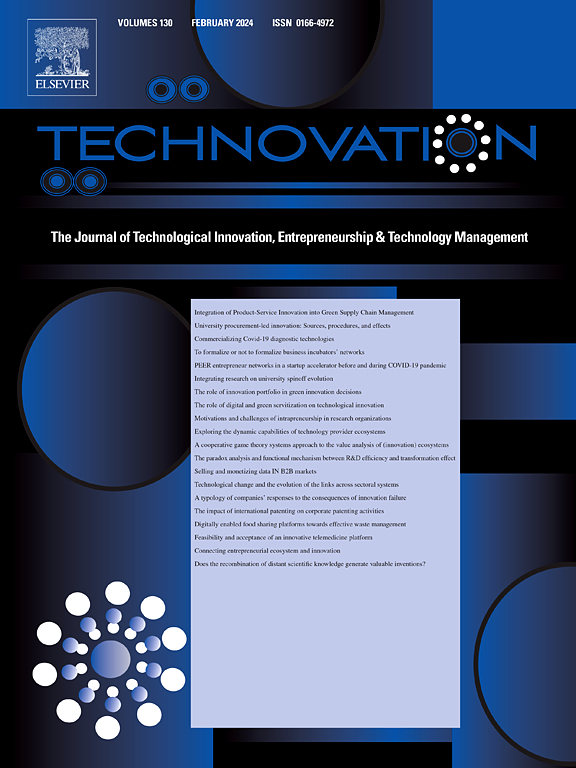Policy instrument mix, financial slack, and firm innovation performance: Evidence from China's photovoltaic industry
IF 11.1
1区 管理学
Q1 ENGINEERING, INDUSTRIAL
引用次数: 0
Abstract
Given innovation sparks numerous uncertainties, risks and failures among industrial firms, a deliberately designed industrial policy instrument mix has been deemed more appropriate than a single instrument to address these issues. However, prior literature lacks sufficient investigation to firm-level innovation implications of instrument mix. Drawing upon the institution-based view, we establish the nexus between instrument mix (in terms of intensity and diversity, respectively) and firm innovation performance: instrument mix not only support firms' innovation activities via the institution-fostering mechanism, but also delivers certain pressure and control through the institution-constraining mechanism. Integrating these two opposite mechanisms, we propose that both instrument mix intensity and diversity have an inverse U-shaped relationship with firm innovation performance. Moreover, such curvilinear relationship, we postulate, is contingent on financial slack as target firms’ characteristic. Using archival data on listed firms in Chinese photovoltaic industry from 2012 to 2017 and relevant national policy documents between 2010 and 2017, we find an inverted U-shaped relationship between instrument mix diversity and firm innovation performance. By contrast, the nonlinear influence of instrument mix intensity is significant only when financial slack is considered and being attenuated. Overall, our work contributes to extending the policy mix literature in the context of emerging economies.
求助全文
约1分钟内获得全文
求助全文
来源期刊

Technovation
管理科学-工程:工业
CiteScore
15.10
自引率
11.20%
发文量
208
审稿时长
91 days
期刊介绍:
The interdisciplinary journal Technovation covers various aspects of technological innovation, exploring processes, products, and social impacts. It examines innovation in both process and product realms, including social innovations like regulatory frameworks and non-economic benefits. Topics range from emerging trends and capital for development to managing technology-intensive ventures and innovation in organizations of different sizes. It also discusses organizational structures, investment strategies for science and technology enterprises, and the roles of technological innovators. Additionally, it addresses technology transfer between developing countries and innovation across enterprise, political, and economic systems.
 求助内容:
求助内容: 应助结果提醒方式:
应助结果提醒方式:


